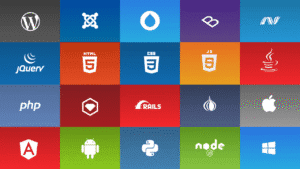Complete SEO Checklist for 2025
Introduction
Keeping up with SEO changes is about more than just adding keywords. As we head into 2025, strategies are shifting faster than ever. Search engines like Google are updating their algorithms often, making it crucial to stay ahead. If you don’t adapt, your site might fall behind competitors. A recent case study found that websites updating their SEO approach saw a 35% boost in organic traffic within three months. That shows just how powerful the right tactics can be. To win in 2025, your SEO plan needs to be current, flexible, and packed with the right techniques.
Conducting Comprehensive Keyword Research for 2025
Understanding User Intent in the New SEO Landscape
Keyword research isn’t just about adding popular words anymore. Now, understanding what visitors want helps you rank higher. Search intent falls into four main types:
- Informational: People want answers, like “What is SEO?”
- Navigational: They look for specific sites or brands.
- Transactional: Users want to buy or take action.
- Local: Searches tied to a nearby location, like “coffee shops near me.”
Matching your content to these needs boosts your chances of getting clicks and ranking high.
Utilizing Advanced Keyword Tools and AI-Driven Insights
Emerging tools now use artificial intelligence to find better keywords. Tools like ChatGPT, Surfer SEO, and the latest SEMrush updates analyze millions of searches in seconds. These tools help discover hidden opportunities and trending topics. For example, AI can suggest long-tail phrases that match how people actually speak. Use these insights to craft smarter keyword lists that bring in targeted traffic.
Prioritizing Long-Tail and Semantic Keywords
Long-tail keywords are longer, more specific phrases. They usually have less competition but attract better quality visitors. For example, instead of “shoes,” try “men’s waterproof running shoes.” Incorporate semantic keywords, which relate to the main keywords, to help Google understand your content better. This matches Google’s focus on meaning rather than just exact words.
Optimizing On-Page SEO for Future Rankings
Updating Title Tags and Meta Descriptions for 2025
Your titles and descriptions are what get people to click. Use clear, engaging language that includes your keywords naturally. Keep titles under 60 characters so they don’t get cut off. Make meta descriptions compelling—answering the question, “What will visitors get?” increases click-throughs. Focus on aligning these with what searchers want to see.
Enhancing URL Structures and Internal Linking
Create URLs that are simple and descriptive, like yourwebsite.com/seo-tips-2025. Use internal links to guide visitors to related content within your site. For example, link from your “SEO checklist” page to “keyword research tips.” This improves site navigation and distributes page authority across your website.
Utilizing Structured Data and Schema Markup
Structured data helps search engines read your content like a map. Use schema for reviews, FAQs, recipes, and more. When done right, your site can show rich snippets—like star ratings and extra info—in search results. Rich snippets grab attention and boost your chances of getting clicks.
Technical SEO Strategies for 2025
Ensuring Mobile-First Indexing Readiness
More than half of all web traffic comes from mobile devices. Run tests to check your site on different phones and tablets. Speed up your pages by compressing images and removing unnecessary scripts. If you haven’t already, use AMP (Accelerated Mobile Pages) for fast-loading mobile pages, especially for news and blog posts.
Improving Site Speed and Core Web Vitals
Google tracks how fast your site loads and how users interact with it. Use tools like Google PageSpeed Insights to find speed issues. Compress images, minify code, and remove unnecessary plugins. Aim for a loading time under 3 seconds to keep visitors happy and reduce bounce rates.
Implementing Effective Crawl Budget and Indexing Controls
Control what search engines scan on your site. Use XML sitemaps to tell Google about your pages. Robots.txt files help block sections you don’t want indexed. Use canonical tags to avoid duplicate content problems, especially if your site has multiple URLs leading to the same page.
Content Strategy and Creation for 2025
Leveraging AI and Data-Driven Content Planning
Use SEO tools to identify trending topics ahead of time. Check what your competitors are ranking for, then create content that fills gaps or offers fresh angles. Combining data with AI helps you craft relevant content that aligns with what users are searching for today.
Developing High-Quality, E-A-T Compliant Content
E-A-T stands for Expertise, Authority, and Trustworthiness. To rank well, your content must show you know your stuff. Include author bios, cite reputable sources, and update content regularly. Formats like detailed guides, videos, and case studies perform well because they seem reliable and valuable.
Optimizing for Voice Search and Visual Content
Voice search is growing fast. Use conversational keywords like “best places to eat near me.” Also, enhance visual content. Use high-quality images, videos, and AR/VR elements if applicable. These enrich your site and help capture traffic from visual searches.
Off-Page SEO and Backlink Building in 2025
Building High-Quality, Relevant Backlinks
Focus on getting backlinks from trusted sources in your niche. Reach out to industry blogs, provide guest posts, or share content that naturally attracts links. Quality backlinks increase your domain authority, making your site rank higher.
Managing Brand Mentions and Digital PR
Your brand can be mentioned without a link. Turn these mentions into backlinks by politely requesting a link or collaboration. Good outreach builds relationships and spreads your content across more platforms, boosting your presence.
Monitoring and Disavowing Toxic Links
Regularly audit your backlink profile. Use tools like Ahrefs, SEMrush, or Moz for analysis. Disavow spammy or low-quality links that could harm your ranking. Keep your backlink profile clean and relevant.
Monitoring Performance and Staying Ahead
Utilizing SEO Analytics and Reporting Tools
Track your progress with tools like Google Analytics and Search Console. Focus on key metrics such as organic traffic, bounce rate, and conversions. Set up dashboards that update in real-time to catch issues quickly and adjust your strategies accordingly.
Adapting to Algorithm Updates and Industry Changes
Search engines update their algorithms often. Stay informed by following official blogs and SEO news sites. Be ready to tweak your tactics quickly. An agile approach helps you maintain or improve your rankings over time.
Continuous Learning and Community Engagement
Join SEO forums, webinars, and conferences. Share insights and learn from others’ experiences. Staying connected helps you spot emerging trends and adapt faster to new changes.
Conclusion
The SEO landscape for 2025 demands continuous effort and adaptation. Focus on thorough keyword research, on-page and technical optimizations, and high-quality content. Back your efforts with smart off-page tactics and vigilant monitoring. The key to staying ahead is to evolve with the algorithms and prioritize your audience’s needs. Regularly audit your website’s SEO health, and keep pushing forward to maintain top search rankings. Success in 2025 isn’t about one-time fixes—it’s about staying proactive and ready for change.



































































































